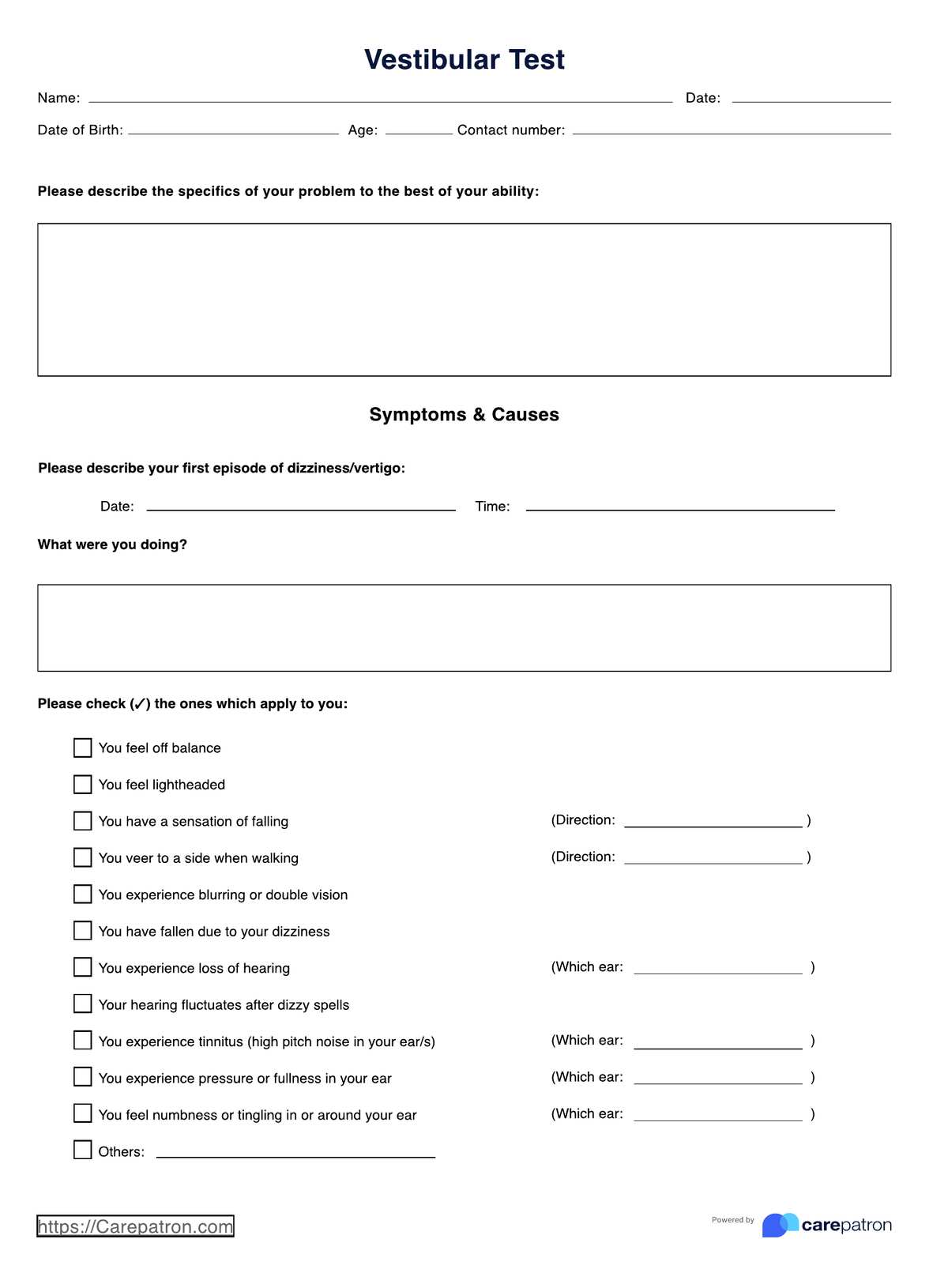It’s helpful to diagnose both common and not-so-common vestibular system disorders. By assessing before doing additional, in-depth vestibular tests, one can identify which tests are needed and if the source is genetic, environmental, etc.

Vestibular Test
Use our vestibular test to identify if a patient’s dizziness or balance problems are caused by a vestibular system disorder.
Use Template
Vestibular Test Template
Commonly asked questions
You can conduct a general vestibular test right after the patient shares their concerns and may follow up with other vestibular tests when necessary.
It depends on the kind of vestibular test. However, it consists mostly of the practitioner administrating the test, placing measurement devices near the patient’s eyes or near the ears, followed by several exercises or stimuli.
EHR and practice management software
Get started for free
*No credit card required
Free
$0/usd
Unlimited clients
Telehealth
1GB of storage
Client portal text
Automated billing and online payments











